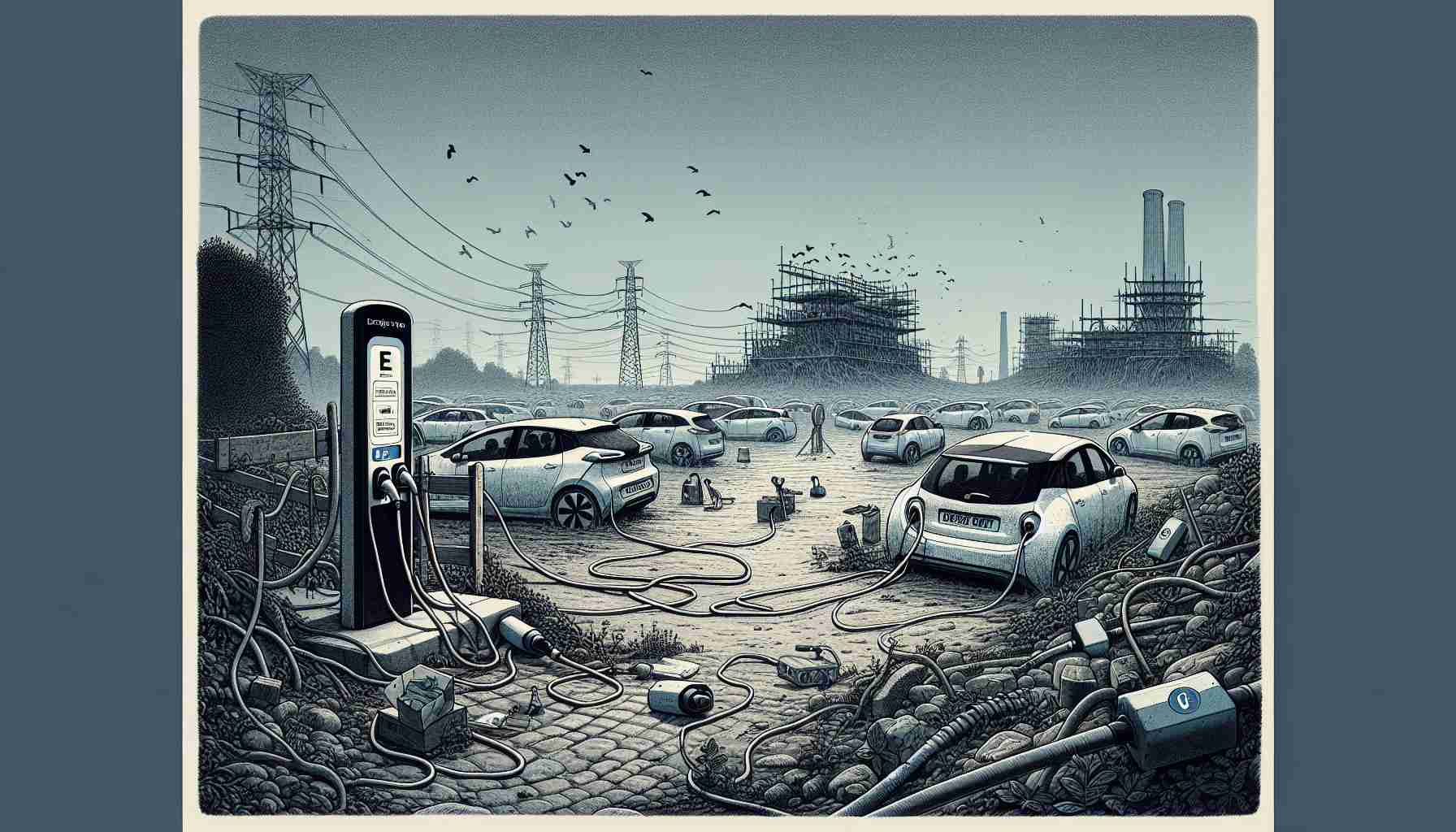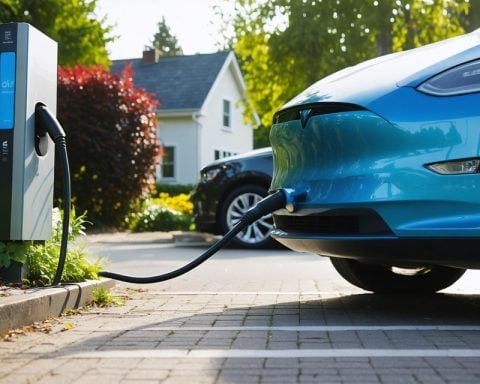- An advanced pilot station along the A131 in Essex illustrates the potential of high-speed electric vehicle charging with 20-minute top-ups.
- Despite this showcase, a government report reveals the scarcity of rapid chargers across Britain’s motorways, with many areas failing to meet basic benchmarks.
- Issues such as out-of-service chargers, unexpected fees, and challenging access routes deter drivers.
- Many drivers face difficulties with upfront payments and slow refund processes, contributing to frustration and eroding trust in electric vehicles.
- Infrastructure shortcomings, including power grid limitations and bureaucratic hurdles, impede the growth of dependable charging networks.
- While electric vehicle sales targets are ambitious, achieving a fully electric highway network by 2035 depends on improved and reliable infrastructure.
- Overall success depends not just on technology but on creating supportive conditions for widespread electric vehicle charging access.
Beneath the looming canopies of a bustling forecourt along the A131 in Essex, an electric revolution idles. Brightly colored cars and sleek vans glide silently between rows of ultra-rapid chargers, each promising rapid rejuvenation—a mere 20-minute pause to add 200 miles of range. This oasis of modernity beckons, with its gourmet coffee shop and wi-fi-enabled sanctuary shielding visitors from the drizzle. Yet, while this cutting-edge installation showcases the potential of an electric future, it remains a dazzling exception rather than the norm.
Across Britain’s sprawling motorways, optimism dims. A government report starkly reveals how this pilot station stands in stark contrast to the reality faced by many electric vehicle drivers. The lifeblood of an electric road trip—rapid and ultra-rapid chargers—remains scarce, with just over half of highway service areas reaching the administration’s meager benchmarks. Charging stations are scattered like breadcrumbs, many hidden away, their labyrinthine paths frustrating the most dedicated of drivers.
The plight of the everyday traveler is all too real. Encounters with out-of-service points, unexpected parking fees, and rain-soaked waits cast a shadow over electric aspirations. For many, exorbitant upfront payments disappear into a digital void, with refunds trickling back over weeks. A perfect storm of intricate planning protocols, inadequate power grids, and understaffed local councils stymie progress, eroding confidence in electric dreams.
Despite burgeoning electric vehicle sales targets, infrastructure remains a stumbling block. Though cellphones simplify finding charging spots, unreliability still breeds doubt. By 2035, the UK hopes for highways humming exclusively with electric whispers, but it’s clear: without pervasive and dependable charging networks, visions of a green transport utopia may not move beyond the drawing board. The journey toward widespread electric adoption isn’t just about technology—it’s about laying the groundwork so every driver, wherever they roam, can confidently plug in and power on.
Revolutionizing Britain’s Electric Highways: Bridging the Gap Between Vision and Reality
How-To Steps & Life Hacks for Efficient EV Use
1. Pre-Trip Planning: Before you hit the road, use apps like Zap-Map or PlugShare to locate charging stations along your route. Ensure they are working and check user reviews for any potential issues.
2. Optimize Charging Times: Aim to charge during off-peak hours or at stations with dynamic pricing to reduce costs.
3. Utilize Loyalty Programs: Many charging networks offer loyalty programs or subscriptions that can significantly reduce per-charge costs.
4. Battery Management Tips: To extend the life of your EV battery, try to keep the charge between 20% and 80%, and avoid charging to 100% unless necessary for long trips.
Real-World Use Cases
– Fleet Operators: Companies transitioning their fleets to electric must consider reliable access to charging infrastructure. Investing in private charging solutions can mitigate the risks associated with public charging networks.
– Rural Areas: The development of localized charging solutions is crucial for rural areas that often lack sufficient infrastructure compared to urban centers.
Market Forecasts & Industry Trends
The electric vehicle (EV) market in the UK is expected to grow significantly, with the government planning to ban the sale of new petrol and diesel cars by 2030. As of late 2023, there are approximately 40,000 charging points across the UK, but the number is expected to increase dramatically over the next decade. Industry experts predict the need for around 150,000 to 300,000 public charge points by 2035 to meet the demand.
Reviews & Comparisons
– Pod Point vs. BP Pulse: Pod Point typically offers more cost-effective solutions for home charging, whereas BP Pulse provides extensive coverage for rapid charging stations across the UK.
– Tesla Supercharger Network: Known for reliability and speed, the Tesla Supercharger network currently outperforms many counterparts but requires owning a Tesla or using an adapter for other models.
Controversies & Limitations
– Infrastructure Delays: There is significant debate about the speed at which the UK’s infrastructure can be developed to support mass EV adoption. Bureaucratic red tape and insufficient power grids are cited as major obstacles.
– Equity Concerns: Access to charging stations is not evenly distributed, with urban areas far better served than rural regions, raising concerns about equitable access to EV technology.
Features, Specs & Pricing
Common features of modern charging stations include compatibility with multiple EV models, remote monitoring, and contactless payment options. Pricing varies widely based on the speed of the charger. Ultra-rapid chargers may cost around £0.30 to £0.60 per kWh, while slower home chargers are cheaper but take longer to charge.
Security & Sustainability
– Charging Security: Users are advised to use locking cables and reputable charging stations to avoid cable theft.
– Sustainable Energy: Some operators, like Gridserve, power their networks with 100% renewable energy, making them a more sustainable option.
Insights & Predictions
Despite current challenges, the trend toward electrification is irreversible. With increased government and private sector investment in charging infrastructure, reliability is expected to improve, eventually alleviating many of the current concerns.
Tutorials & Compatibility
Video tutorials on cable connections and app usage are increasingly available from charging network providers, ensuring even newcomers to EV technology can confidently use the systems.
Pros & Cons Overview
Pros:
– Environmentally friendly.
– Lower running costs compared to petrol vehicles.
– Continuous technological advancements.
Cons:
– Limited and sometimes unreliable charging infrastructure.
– Higher initial purchase price for vehicles.
– Inconsistent charging costs.
Actionable Recommendations
– App Utilization: Always have a couple of reliable charging apps installed to reduce anxiety during trips.
– Network Membership: Consider subscribing to a charging network that you frequently use for cost savings.
– Educate Yourself: Keep abreast of government programs and incentives to help with the transition to electric vehicles.
For the latest updates on electric vehicle infrastructure, check resources like the Department for Transport’s official site: UK Government.













